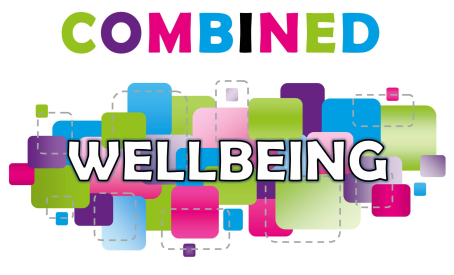Gaming and Gambling

Information
Here you’ll find answers to some common questions concerning gaming and gambling.
Select the underlined questions below to see more.
Gaming is an incredibly popular and every-growing past time amongst people of all ages, it can be a great way to socialise, relax, learn new skills, but like many things gaming does carry risks and for children and young people it can start to get in the way of things such as school and other hobbies. There can be big financial costs involved and young people can struggle with their mental health and wellbeing as a result. In the extreme gaming can become a disorder which requires specialist support services, but there are lots of things you and your children can do to help keep it positive and fun.
When we think of gaming we often have an image of a teenager sitting alone in a dark room for hours on end, and whilst this can happen there are a huge number of positives which children and young people can gain through playing. Some of these include:
Developmental:
- Improved hand-eye coordination and fine motor skills
- Problem-solving, strategy and planning, decision-making and logic skills
- Target and goal setting
- Multi-tasking and working within a time frame
Social:
- Developing existing friendships or making new ones with people who have similar interests
- Team working and collaboration with others
- Learning to play fairly and share with others
- Learning to act respectfully, help others and work towards a common goal
- Can develop family relationships if the family plays together
Educational:
- Increased cognition and memory skills
- Creativity and emotional development
- Increased visual and auditory skills
- Understanding concepts they’re learning at school, like maths
- Critical thinking and analysis
- Increased literacy skills – the National Literacy Association in collaboration with Taming Gaming has released a list of games which can not only help a child’s literacy through playing the games, but other activities associated with it as well
Gaming can have a huge range of positives and the reasons why people enjoy playing so much are also very varied. According to the Children’s Commissioner, 93% of children in the UK play video games (October 2019) and gaming has become the most popular and profitable form of entertainment (Reuters 2018). The Young Gamers and Gamblers Education Trust (YGAM) spoke to young people aged between 9- 16 and asked them why they enjoyed and played video games and there were several reasons which came up most often:
- Escapism – Away from the everyday, but also an escape from their life – they can be who they want to be, go where they want to go and do whatever they want – the games allow full autonomy.
- Sense of Achievement – Within games there are lots of little opportunities to advance through levels, rising up a visual leaderboard, play against people from all over the world, often more regularly than you could do in the real world. This allows a young person to achieve at something they enjoy which they may not get the opportunity to do in real life.
- Exploration – It can often feel like they don’t have a lot of control over their life, but with games can be in control. They get to choose the games they play, and they get to choose the way they engage in them, giving young people a sense of autonomy.
- Risk Taking – Young people are more likely to take risks than adults, in games if they die, they just press restart and try again. It doesn’t really impact on physical life as much as, for example, failing a test at school.
- Competition – If they play football or do gymnastics, they only get to compete once or twice a week. In games they’re able to compete every single day for hours on end.
- To make money – Esports and streaming provide opportunities to turn gaming into a career. Just like in professional sport or the music industry, the chances of reaching the top are slim, but that doesn’t make it any less appealing to players.
- Creativity – The opportunity to create new worlds and have control over them can be very attractive in games like Minecraft, for example. They can’t really do that in the physical world and certainly not to the same scale.
- Socialise – Whilst playing online they don’t just get to build on existing friendships, they get to establish new ones. With online forums, live streaming and Esports channels, they’re a part of a culture and a community that is larger than them or any single game.
- Stress Relief – We all need to take a break from daily life at times and how we choose to do that can differ. Gaming can be a way to escape these pressures, but if it is causing a young person not to deal with the things they need to deal with, that can be a problem.
- Collecting – Many players enjoy visual progression as much as skill progression in games. With in-app purchases, loot boxes and micro-transactions, they now have many ways to collect different items, not just games, but character items too.
- Game Suitability – is there inappropriate content, are they able to access things you would prefer they didn’t, for example, extreme violence? Each game will have a PEGI rating which works the same way a PG rating on a film will, but there still might be content you don’t want them accessing so researching the games and seeing what is involved in play can help.
- Who are they talking to – lots of games will feature a live chat function, both verbal and non-verbal, which the young person can communicate through. They are able to talk to anyone playing the game so check whether they know all the people they are talking to, if not – who are they talking to? Is the content of the conversations appropriate and does your child know when and how to report if that changes?
- Online Toxicity – As seen above, they are potentially able to talk to huge groups of people whilst playing the games, this can expose them to bullying, teasing, harassment and other harmful behaviours. Talking to them about what is and isn’t appropriate within the games and empowering them to question, report, or block people if this arises.
- In-game purchases and spending – many games are now free to buy, but will include in-game purchases in order to progress or to customise your game, these can be expensive and can add up quickly. There is a great deal of pressure on young people to buy these virtual items (they stay within the game and you cannot physically touch them) in order to keep up with their peers, or to progress in the games.
Although gaming has a lot of positives it can also become a problem, here are some of the top signs to be aware of:
- Always talking about the game even when not playing and trying to play as much as possible
- Seeming irritable and not able to concentrate or stay still when not playing
- Not recognising how long they are playing for, lying about the amount of time or playing in secret eg after lights out
- Extreme fatigue and difficulty staying awake
- Headaches, migraines and wrist, hand or finger pain
- Loss of interest or not caring about things such as hygiene, exercise, eating and prioritising gaming instead
- Neglecting friendships and not taking part in things they used to eg hobbies or socialising as all their time is spent online
- School work declining or them not wanting to go to school so they can game instead
- Being overly defensive and possibly aggressive when questioned about their gaming when boundaries are put in place, or a consequence is carried out
- Changes in mood, including increasingly common episodes of low mood and anxiety
- Increasing spends within in the games; asking for more money for the games, stealing or using other people’s bank cards
- Using energy drinks or other substances in order to stay awake and game for longer
Many games that we now play are free to purchase. The reason games companies can afford to do this is because of in-game purchases also known as micro-transactions. You may have heard of “Loot Boxes” in the news recently and the controversy around them in relation to their similarity to gambling. Loot Boxes fall under the umbrella of micro-transactions.
A “Loot Box” is a virtual item within a game that can be bought, either using money that has been built up in the game (through playing for long periods of time, or through progressing through the levels and beating certain things) or they can be purchased with real money if they do not have enough within the game. The items are virtual and cannot be physically touched, which can be a difficult idea to wrap your head around. The “Loot Boxes” once purchased, contain a randomised selection of items. Some of these will contain cosmetic items, which will allow them to customise what their character looks like (sometimes called a “Skin”), or they may contain a rare weapon etc.
For young people who play video games, “Loot Boxes” and micro-transactions are an important and integral part of gaming. There can be a huge amount of pressure on them to have the rare items to keep up with their peers and to not be the odd one out. They appeal to young people’s impulsivity, sometimes they will have a time limit on them, so if they don’t buy them now they will lose that opportunity. This is a really hard thing, as humans we are loss aversive and the thought of what we could have won often weighs really heavy.
If you are buying a game for your child that you know contains micro-transactions have a conversation with them about spending, how much they can buy and what they can buy. If your card is linked to the game set up limits, or remove the automatic payment option so they cannot simply click “buy” without realising what they are doing.

Coping with
Top tips to cope if you have worries about a young persons gaming and gambling
The following buttons are self-help suggestions for both you and young people

Finding help
Who can they talk to?
- Friends
- Family
- Youth worker
- Health professional (Counsellor, Nurse)
- Charities and Helplines
Select the underlined topics below to view what resources are available.

Getting more help
If you are really worried and feel like you aren’t getting through to them – you can talk to their GP. They will be able to signpost you to additional support if they think it is necessary.
The National Gaming Clinic has lots of information and they can assess whether the young person needs specialist intervention, this is a last resort for young people who are diagnosed with Gaming Disorder – for the vast majority they may be playing excessively, and it might be impacting their lives, but they won’t meet the specific criteria for gaming disorder.
The important thing to remember is that you are not alone, there are many people going through something similar and feeling like they don’t know what to do.












